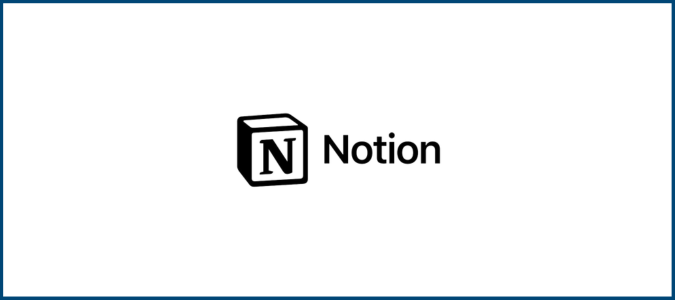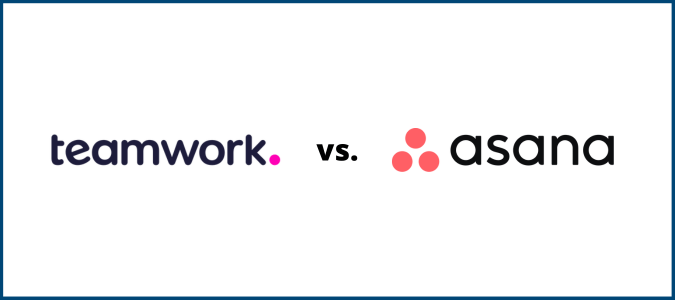When it comes to solutions for project management, Trello and Airtable have it covered on opposite ends. Trello’s Kanban board setup makes it kind to beginners and ideal for small business task organization, while Airtable’s deep functionality and app building tool makes it incredibly useful for organizations with custom needs for content creation, revenue tracking, and intricate project work.
As a household name in project management, Trello’s strength lies in its simplicity. It focuses on organizing tasks in Kanban boards and it does that exceptionally well. Its platform helps you get up and running in minutes, so you can add members, create task cards, and automate routine actions right away. Try Trello’s Premium plan free for 14 days.
Airtable contains some advanced features that put it in a league beyond most other project management software. With real-time reporting and syncing across boards, your team stays in the loop and your data stays current throughout every step of a sprint or project. Sign up for Airtable today for free to get started.

Trello and Airtable Compared to the Best Project Management Software
Airtable didn’t make our top list of general project management software, but Trello came in as a great option for Kanban-focused project management. If you’re in the market for new project management software, check out our Golden Eggs below, which are some quality alternatives to the two products we’re comparing in this post.
Monday.com is a leader in this category for its fantastic array of features for collaboration, client work, resource management, and more. Try any Monday.com plan free for 14 days.
ClickUp makes remote work easier with built-in communication tools and an intuitive layout that keeps everyone focused and productive, even from afar. Sign up to use ClickUp for free.
Smartsheet has a flexible setup that allows you to design your workflow to match your team’s needs, supported by a solid array of integrations and automations. Try Smartsheet out on a 30-day free trial.
Trello Compared to Airtable
Trello and Airtable both inhabit the same software category, but their individual approaches to solving project management couldn’t be more different. We broke them down to show you what separates them from each other as well as how they work within their niches.
Trello Highlights
Trello is a no-frills platform from Atlassian centered around the Kanban project methodology, and it doesn’t go very far beyond that. It gives you the basic views—highlighted, of course, by its Kanban boards—all bundled into a convenient dashboard where you can see all your projects’ health and status together. With its templates, Trello makes getting started a snap with prebuilt setups for different industries, from design to education and engineering.
Integrations boost Trello’s productivity features by connecting with other apps and solutions that you already use, while power-ups are a way to enhance Trello’s functionality within the platform. Plus, its Butler automation tool lets you create rules to take care of tasks that don’t need a human touch so that your team can take care of the things that do.
Trello can work for many different industries, but it’s particularly useful for marketing, design, startups, and remote teams. More than that, it’s best suited for smaller teams and organizations, with affordable pricing to match.
Airtable Highlights
Technically, Airtable isn’t built specifically for project management. It’s a powerful data repository that can sync across barriers to remove information silos, bolstered by an in-platform app builder that lets you create your own custom interfaces within the platform using Javascript or a drag-and-drop WYSIWYG builder.
While Airtable defaults to a spreadsheet-style table-and-cell setup, the app builder lets you transcend that. Create interfaces that will field, sort, and assign requests, organize project work for teams and departments, display critical information at a glance, and so much more. Plus, you can even use light coding knowledge to customize your automations and Airtable’s templates and make them even more powerful and useful.
Airtable suits marketing and content management teams very well, but can be deployed by companies with any project needs that involve keeping tabs on lots of tasks, data (like revenue, budgets, and website metrics), notifications, and work being done by others in the organization.
With plenty of integrations, you can boost Airtable’s functionality by connecting it to other apps that you’re using. Connect data from dozens of sources, like Slack, Jotform, Eventbrite, Google Calendar, Google Drive, and more. Airtable’s project management features lean toward content management and marketing campaigns, but it offers templates to help teams use it for HR, operations, finance, and more use cases.
Trello vs. Airtable: Pros and Cons
Before you make your project management decision, we broke down our research to show you exactly what Trello and Airtable offer. We dug into their strengths and uncovered their weaknesses so that you get a clear and complete view of what you get with each solution.
Where Trello Shines
Intuitive: The way Trello is set up, you can sign up and get right to work. It’s simple enough that anyone can create a board, start inviting members, and add task cards with little to no training. Key information is always easy to see for team members. And admins can choose who has access to which cards and tasks, making it a good solution for when you want a solid organizational tool that’s just for a specific small team or handling uncomplicated projects.
Kanban-style organization: As soon as you open a card in a Trello Kanban board, you’ll see space to leave comments and task descriptions, add members, create labels and checklists, add attachments, and even set up automations. This is pretty much the full extent of what you can do in Trello, but this will deliver the core essentials well enough for many teams.

Plugins and integrations: Trello naturally syncs well with other Atlassian platforms like Jira (its PM platform for development) and Confluence (its requirements management platform). But it also delivers over 200 integrations with other pieces of software. It plays nicely with Slack, Salesforce, Zapier, Toggl, Google Drive, and many more platforms to bring more functionality into Trello. You can search integrations and plugins by use, industry, and keywords, then add these power-ups directly to Trello for a more robust platform.
Automations: Many project management solutions don’t offer automations except with their more expensive plans. Trello, however, gives you four automation runs per month in its free-forever version, with more allowed on each successive paid plan. Use Butler to set rules, actions, due date commands, and calendar commands with no need to use code. Then, deploy these automations at either the card or board level.
Language options: While most project management software supports multilingual teams, Trello goes way beyond the rest of the pack with 21 language options. Your team can work in Trello in German, Russian, Japanese, Traditional and Simplified Chinese, Czech, Swedish, and many others. As a result, this positions Trello as a leading choice for global teams, especially ones that utilize international freelancers and contractors.
Affordability: Trello is one of the cheapest solutions out there for project management, and even its free version already comes with plenty of features to make it useful for microteams. The Standard plan costs just $5 per user per month, putting it at one of the lowest-priced project management solutions. The Premium plan goes up to $10 per user per month, with Trello’s Enterprise tier starting at $17.50 per user per month (with scaled pricing based on the number of users, up to 5,000). Trello also has no user minimum, so it’s accessible for small teams.
Where Trello Needs Improvement
Collaboration: Trello leaves something to be desired when it comes to communication and collaboration among teams. You can ping team members in card comments using @tagging and attach files to task cards, but there’s no in-platform document collaboration or chat messaging. The activity feed can get a little cluttered, too. Fortunately, linking Trello to a communication platform like Slack alleviates some of this inconvenience.
Suitability for large teams: Trello’s basic interface and low cost makes it a great choice for small teams and startups, but it’s not ideal if you have a large team or organization. While it remains an affordable option at scale, Trello just doesn’t have the advanced, powerful tools necessary to keep up with large or rapidly growing businesses. Many organizations find they eventually outgrow Trello if they hit their growth goals.
Advanced tools: Trello lacks a few advanced features that come standard with most modern project management solutions. It has no natural language processing and you can’t run advanced searches of the information you have in the platform, which makes finding what you need in your activity log and projects less efficient. It also doesn’t have a quick add button in every area of your board, which can mean taking a couple extra steps when you want to create a new project, task, or assignment.
Where Airtable Shines
Real-time updates: Airtable specializes in syncing information across its entire platform, so all data gets updated automatically and everyone on your team gets the same information in one location. It saves you time when you don’t have to manually send updates for changes or double-check one section of the software against another. The customizability of Airtable’s interface allows for full freedom in this regard, letting you create an interface that pulls exactly what you want from where you want it sourced.

Customizable automations: Airtable offers even more freedom through its automations. You can automate hand-offs and many other actions without any code, or use Javascript and any other coding skills you have to build one-of-a-kind sequences with your own rules. And, you can make these as complex as you want with multi-sequence setups. Approvals, requests, new task assignments, and so much more become a breeze in Airtable.
Syncing and integrations: Syncing isn’t just limited to within Airtable. Tap into one of its 24 integrations to pull information from other platforms and expand Airtable’s own functionality. Pull from email platforms, social media channels, calendars, productivity tools, payment gateways, and more.
App-building: Airtable is as much an app builder as a project management tool, and it lets you build unique and powerful interfaces within the platform itself. You can use templates to get started quickly or get your hands dirty and create something bespoke for your organization, your clients, or your customers. You can even just browse templates for inspiration on how to utilize this nearly limitless feature, like those for bug tracking, OKRs, and user research.
Where Airtable Needs Improvement
Client management: Airtable can adapt to a lot of types of project work, but it lacks some key features that agencies might need. Built-in invoicing and budgeting tools are lacking, but you could try building an app within Airtable that replicates those functions. User permissions also aren’t terribly granular, leaving you only the option for full commenter or read-only users. That can be troublesome if you have project stakeholders that like to actively participate in some stages of project work.
Affordability: Airtable isn’t wildly expensive and they offer a free-forever plan, but the latter is pretty seriously limited. Paid plans start at $10 per user per month, going up to $20 for the full-featured Pro plan (not counting the custom-priced Enterprise tier). This can get expensive in a hurry for anything larger than a tiny team.
Built-in key features: Airtable has some surprising omissions from its core feature set. Gantt charts and timeline views are only available through extensions. With most software, these are included with at least one package automatically. It becomes even less convenient with Airtable’s paid plans, since its entry-level plan only gives you three extensions, with a max of 10 allowed on its Pro.
The Last Word on Trello Compared to Airtable
Trello and Airtable are adept project management platforms that have very different functionalities. Both keep track of team tasks across multiple projects, but that’s about where the similarities end.
Trello’s Kanban-forward design prioritizes simple project management and transparency. It’s easy for any team to get the hang of using, but that comes at the cost of a distinct lack of advanced features. Airtable, on the other hand, is almost infinitely customizable through its interface builder. Create fully custom workflows, data syncing, and visualizations of work, pulling information from anywhere on the platform and even beyond through integrations with other software.
Since they inhabit nearly opposite ends of the spectrum, it’s possible that neither Trello nor Airtable will be a good fit for your organization’s project work. If you want to find a potentially better fit, head on over to our full post reviewing the best project management software.














